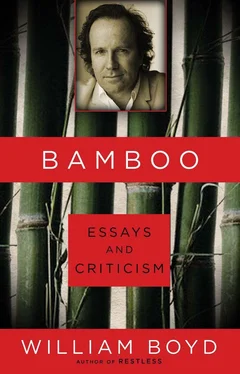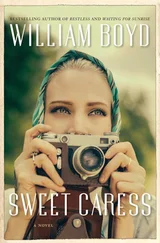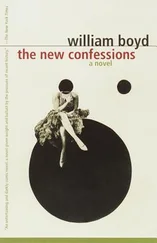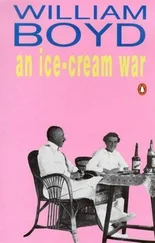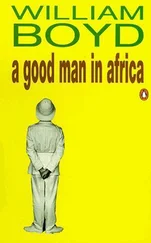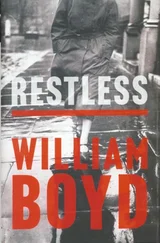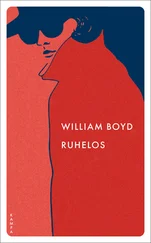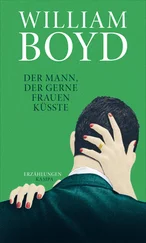W. Watercolour
Is it surprising that Michael Andrews was a watercolour painter of the very highest rank? One of the phenomenal bonuses of the Tate Britain show was to see a selection of the small watercolours of a river near Andrews’s house in Norfolk. Technically, they are breathtaking: a painting like Angler: Geldeston makes you marvel about how these effects are achieved. You feel there is something almost magical going on here. Take a box of watercolours: with your paint reproduce the effect of brilliant sunlight glinting on turbid water.
X. The X-shape at the Centre of the Parterre
at Drummond Castle
Seen from the air, “as the hawk sees it.” And in Drummond: the Multicoloured Parterre he leaves the unpainted canvas to mark out the huge Saltire cross of the gravel paths. Is it because it is so precisely formal? Here we see the shaping hand of man working on and controlling nature. The parterre at Drummond is the very antithesis of a phenomenon like Ayers Rock — but perhaps its creation is not so far removed from the process of an artist trying to capture the look and spirit of Ayers Rock by manipulating coloured pigment on a rectangle of canvas. And what do the strange carnival figures marching across the foreground represent? Jolly clowns or anarchic ghouls? Benign jesters or Lords of Misrule?
Y. W. B. Yeats
“Like a long-legged fly upon the stream/His mind moves upon silence.” For some reason, these lines always remind me of Michael Andrews (whom I never met).
Z. Zen
Andrews was very preoccupied with the teachings of Zen — the whole “Lights” series, it can be argued, is analogous to the progress of the soul towards transcendence. And you could further argue that the fastidiousness of Andrews’s eye, his searching for the numinous, transfiguring moment, has a Zen-like quality to it. But this knowledge, though interesting (as interesting as Andrews’s reading, say), doesn’t significantly help one’s response to the paintings, particularly the greatest. (Andrews himself said, “You can’t paint ideas.”) To put it at its most simple — and banal — Andrews was a wonderful, astonishingly gifted painter and a man of intelligence and feeling. He could do anything — oil, acrylic, landscape, portrait, watercolour, vast canvas or tiny sketch — with absolute confidence in the mastery of his powers. This is a blessing to an artist — to know how formidably accomplished you are, and it is very rare. Andrews is without doubt one of the finest virtuoso painters British painting has seen this century — and I believe the claim could be extended back through time without being seriously gainsaid. But what makes him great — and this is what makes all great artists great — is, as Lawrence Gowing noted in 1980, his ability to yoke his prodigious technical capacity to an uncommon imaginative spirit. There is one other necessary factor I would add to the other two, one which is out of anyone’s control — luck. In Michael Andrews all three cohered. His achievement stands there — inspiring, incontrovertible, immutable. In artistic terms a veritable Ayers Rock.
2002
Thirteen Ways of Looking at a Photograph(Introduction to Anonymous: Enigmatic Images from Unknown Photographers by Robert Flynn Johnson)
I know noble accents
And lucid, inescapable rhythms;
But I know, too,
That the blackbird is involved
In what I know .
“Thirteen Ways of Looking at a Blackbird,” WALLACE STEVENS
We go to photography for images of reality, but images that are more immediately real than the more contingently intimate, adroit and nuanced versions that other art forms provide. This is both photography’s blessing and its curse: it appears to bear irrefutable witness to the nature and content of our world yet it is achieved mechanically. In theory, anyone with a camera can do it: hence its ambiguously freighted appellation — the “artless art.”
The first photographic image I purchased was in 1967 when I was fifteen. I bought — for £5 (a vast sum to me then) — one sheet from the 1965 Pirelli calendar (the month was November) owned by a boy at my school. It was only the exorbitant price I offered that made him part with it and the picture was pinned for many months on the wall above my desk until it was lost in some end-of-term packing fiasco. Doubtless there was some now-forgotten adolescent sexual fascination that drove my determination to buy this picture but this does not explain why, over the thirty-seven years since I first saw it, I have been able to summon this image to mind effortlessly. A young blonde sunglassed woman, in a white T-shirt embroidered with a small anchor, sits at a cafe table in some seaside location. She has a cigarette in her mouth and is caught by the photographer in the very act of lighting it (from a book of matches), her lips are slightly pursed to hold the cigarette steady, the match is flaring at the cigarette’s tip. I had no idea who this woman was and I had no interest in the name of the photographer. But something about that image made me covet it and urged me to spend so much money to make it mine. Even though I lost it some months later its place is secure in the small but select image-bank in my memory. For the first time in my life a photograph had worked on me. Why? What happens on these occasions? How can a seemingly run-of-the-mill image stir one so?
That photograph was to all intents and purposes anonymous and, the more you come to think about it, in photography anonymity is the norm. When you consider the thousands — perhaps the tens of thousands — of photographic images each one of us encounters in a given year the vast majority—99 percent I would venture — is anonymous. In newspapers, magazines, colour supplements, advertisements, in-store promotions, posters, manuals, part works, CD covers, mailshots, travel brochures, textbooks, knitting catalogues, and so on, the photographer’s byline — if by chance there is one — is irrelevant. When it comes to the way we consume photographs we are like sperm whales, jaws wide, cruising through an ocean of swarming images, unreflectingly scooping up those that our eyes alight on.
The only times we are consciously aware of the authorship of a photograph, I would argue, are when we contemplate the photographs we ourselves have taken (or those of friends and family) or when we go deliberately to the photographer’s monograph or exhibition. The signed image — the appropriated, the owned image — is by far the rarest in this pullulating world of pictures.
Therefore to isolate and pointedly categorize the anonymous, as Anonymous does here, is to postulate something both unusual and intriguing. In our twenty-first-century world of millions upon millions of anonymous images what does the selection of a couple of hundred or so, enshrined in a beautifully produced book, say both about our response to the photograph and the practice of photography and, perhaps more importantly, to its status as an art?
The anonymous photograph, thus selected and presented, makes us ask, with new concentration, what it is about a photograph that elevates it above the casual and banal. What criteria do we bring to our evaluation of a photograph, what makes one memorable, another not? What, in short, makes a photograph good? We have become so accustomed to not seeing photographs, through their omnipresence, that now here is a chance to try and determine (without the bubble reputation) why some images move and enthral and remain in our memories — like paintings, like pieces of music.
It’s for this reason that I’ve appropriated the title of Wallace Stevens’s famous poem, “Thirteen Ways of Looking at a Blackbird.” Looking at anonymous photographs and trying to analyse them, without a famous name attached, has the effect of sifting out a variety of responses to the photographic image. It seems to me that we look at photographs in ways that are far more varied and multifarious than the ways we look at other works of art. Sometimes these different responses complement each other, sometimes they cancel each other out, but when the photographer’s name is absent (and thus the photo’s historical-cultural-biographical context) we can, with better precision, more exactly investigate what assumptions and prejudices we bring to the photograph and how the photograph works on us.
Читать дальше
